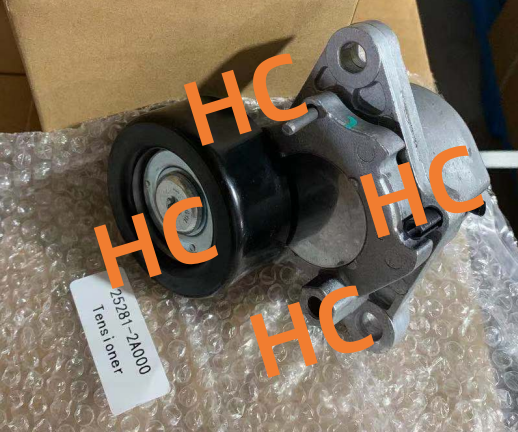1. Function: It is a commonly used holding device in belt and chain transmission systems. Its characteristic is to maintain the appropriate tension of the belt and chain during the transmission process, thereby avoiding belt slippage or preventing synchronous belts from jumping or falling off teeth and dragging out.
Or it can prevent the chain from loosening or falling off, and reduce the wear of sprockets and chains. There are various structures of tensioners, which roughly include fixed structures and elastic automatic adjustment structures. Among them, fixed structures often use fixed adjustable sprockets to adjust the tension of belts and sprockets. Elastic automatic adjustment structures often use elastic components that can automatically rebound to control the tension of belts and chains. Domestic chain tensioners that can be automatically adjusted mostly use spring structures, while foreign tensioners mostly use rubber components.
2. Symptoms of a broken tensioner:
(1) A broken car tensioner may cause engine shaking and ignition difficulties when refueling, and in severe cases, the car may not be able to start. It may also deform the valve top, causing damage to engine components and even locking up, resulting in abnormal transmission of the belt and causing the car to break down.
(2) The car tensioner is used in the timing system of the engine to adjust the tightness of the timing belt and chain.
Once the tensioner is damaged, it will not be able to adjust the tightness of the belt, and the engine will produce abnormal noise, timing jump, ignition and valve timing disorder, which will affect the normal use of the car.
The function of the tensioner is to guide and tighten the timing belt or timing chain of the engine, ensuring that it is always in the optimal tightening state. It is generally divided into two methods: hydraulic and mechanical, both of which can automatically adjust the tension of the timing belt and timing chain.
(3) A broken tensioner can cause vehicle malfunctions such as fuel consumption, weakness, and knocking. On the timing belt or timing chain of the engine, it plays a guiding and tightening role, ensuring that it is always in the optimal tightening state.
It is generally divided into two methods: hydraulic and mechanical, both of which can automatically adjust the tension of the timing belt and timing chain.

3. Solution:
(1) It is recommended to go to a 4S or repair shop in a timely manner to inspect the tensioner, in order to avoid situations such as anchoring, difficulty in ignition, and failure to ignite.
(2) In general, the replacement cycle of the tensioner is the same as that of the timing belt. It is recommended to replace it every 3 to 5 years or around 80000 to 100000 kilometers. The specific replacement time should refer to the vehicle maintenance manual.
(3) Repair the tensioner.
A broken tensioner can cause vehicle malfunctions such as fuel consumption, weakness, and knocking. On the timing belt or timing chain of the engine, it plays a guiding and tightening role, ensuring that it is always in the optimal tightening state. It is generally divided into two methods: hydraulic and mechanical, both of which can automatically adjust the tension of the timing belt and timing chain.
